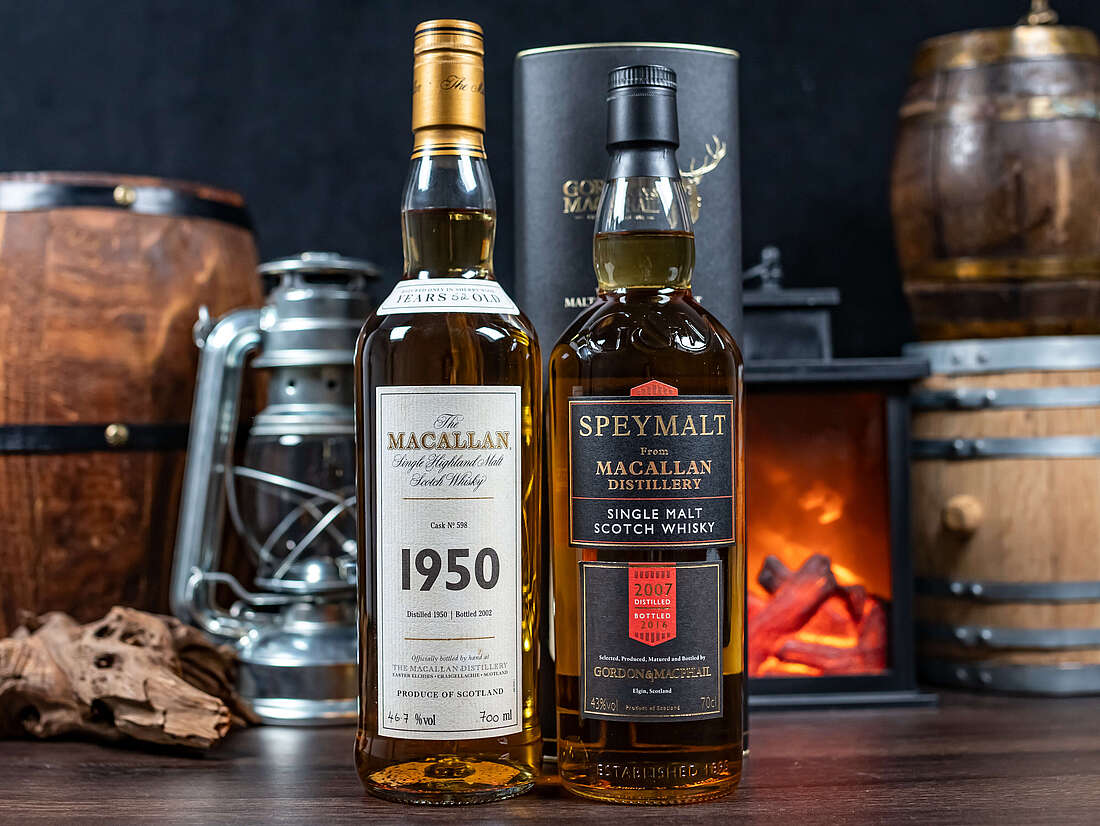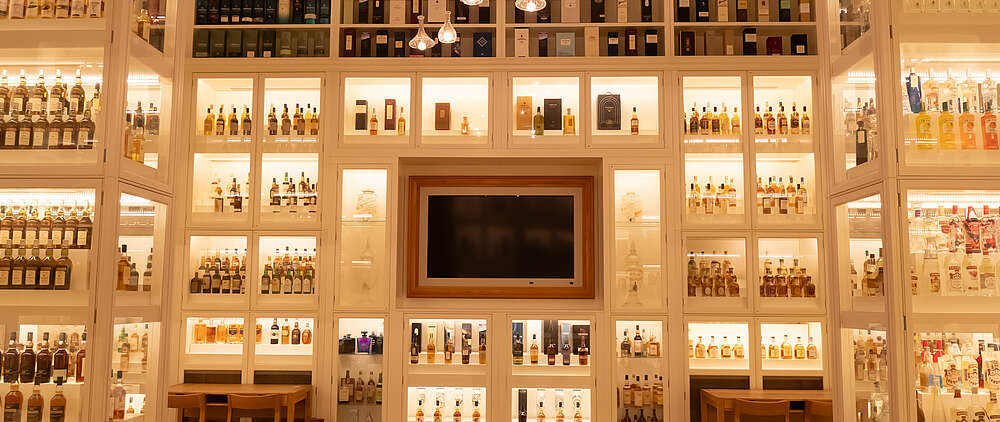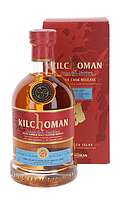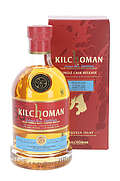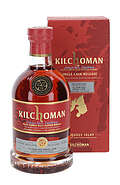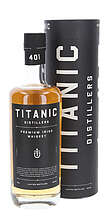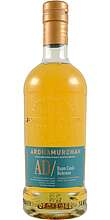Here we want to answer the question of whether the overall quality of whisky has changed over the decades. Has it got worse? Has it improved? Or has the quality remained the same over time? We use the Macallan and Ardbeg distilleries to show you changes in the production process. As far as flavour is concerned, the question remains unanswered.
In principle, the production method has not changed since then. The wash is heated, then the whisky goes into the second still, finally the spirit is ready and stored in casks. But what has changed over the decades? Heating is one example. In the past, a fire was lit under the still and things could burn. Or when the barley was germinating on the malting floors, the temperature was not ideal. Mould and other impurities from stray animals such as cats and mice may have developed. The raw material did not enter the kiln as cleanly as we know it today. And finally, barrels of some kind were used for storage, whereas today there is a separate barrel management system. In the meantime, Macallan has switched from direct firing to gas firing and Ardbeg was closed for years and then started again.
So we would even say that whisky used to be worse! Because the production processes are far better today.
Was everything better in the past?
We romanticise what used to be positive, we suppress the bad - this is important for survival. This can be explained by psychology! The human brain embellishes a lot, and we do the same with whisky.
When it comes to whisky, many people want original, original, unadulterated enjoyment - not a modern blended whisky. But even 100 years ago, the master distiller wanted the optimum result, only his technical possibilities were different, or we could say limited. Many things could happen during the production process: A power outage, the mash could become over-fermented, vinegar bacteria could get into the yeast, resulting in a sour whisky!
Nowadays, in the USA for example, the fermentation tanks are cleaned with hot steam to combat vinegar bacteria before the next mash is prepared. In addition, the malting process is usually no longer carried out by the distilleries, but the malt is deliberately produced in large factories. Furthermore, the barrels are made from specially selected woods.
The 'drop in quality' in Whisky
Let's take Lagavulin. In the past, 5-10% of Lagavulin was bottled as Lagavulin Single Malt. The rest went into a blend. Today, 100% of the production is actually bottled as single malt and therefore 'poorer' casks are also used. That gets lost in a big blend! And if there is no single cask bottling, you can't taste it either.
The question could be how to determine a reduction in quality. You would have to buy two bottles from the same distillery with a big difference in age and compare them. This has been done, but the comparison is flawed. In fact, there is a change in flavour in a bottle that has been stored for a very long time. This is due to the oxygen between the whisky and the cork. Oxygen also penetrates from the outside through the cork. The oxygen oxidises and makes the whisky milder and softer. A flavour that many customers like.
To really compare two identical bottles bottled decades apart, you would have to freeze one bottle to stop the oxidation and then compare them.
In addition, the small quantity of test bottles, the batch and the year have to be taken into account. Difficult! There have certainly been fluctuations within whisky production over the decades. Cask suppliers have changed, the ratio of bourbon to sherry casks has changed, so these are always snapshots. Perhaps you could get round this by buying a bottle of the same whisky every year and then comparing the batches. In any case, it will be difficult. Equipment changes also play a role in terms of flavour. Distilleries have often been closed and reopened years later. Process changes and optimisations were made with the aim of producing better, cheaper and more alcohol. Let's take Ardbeg as an example again. New condensers and a lid on the mash tun were installed when the distillery reopened.
Flavour descriptions
We offer flavour descriptions for our whiskies. As a buyer, you can give a flavour rating. If you observe a whisky over the years, it gets an average score from the customer and a certain trend towards 'better' or 'worse'!
Whisky.de has supported a thesis that looks at how sales of whisky change when it is praised or not by certain personalities. Jim Murray's Whisky Bible, for example, has a measurable influence on sales. It remains to be seen whether Horst Lüning's assessment in German also has a measurable influence.

